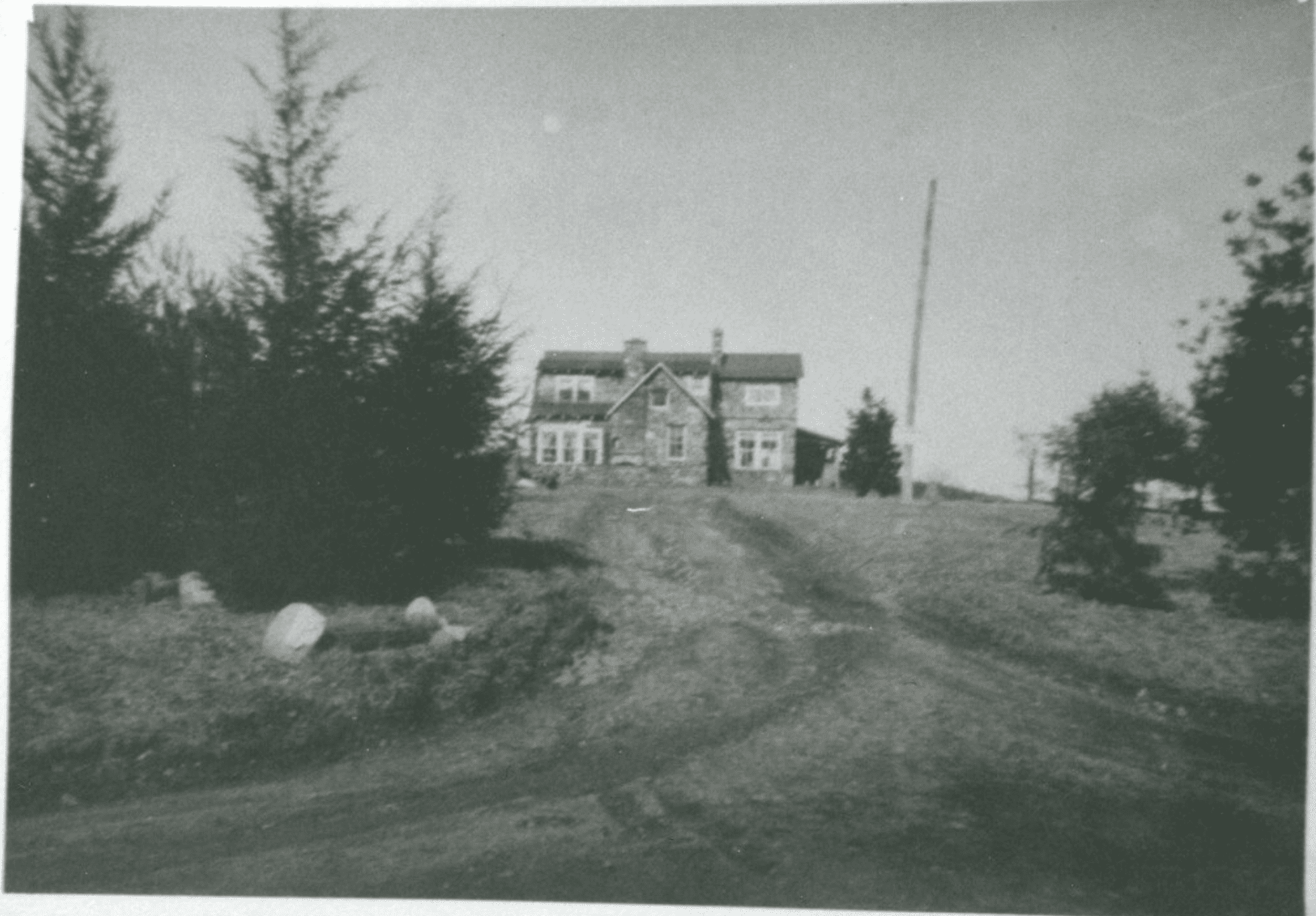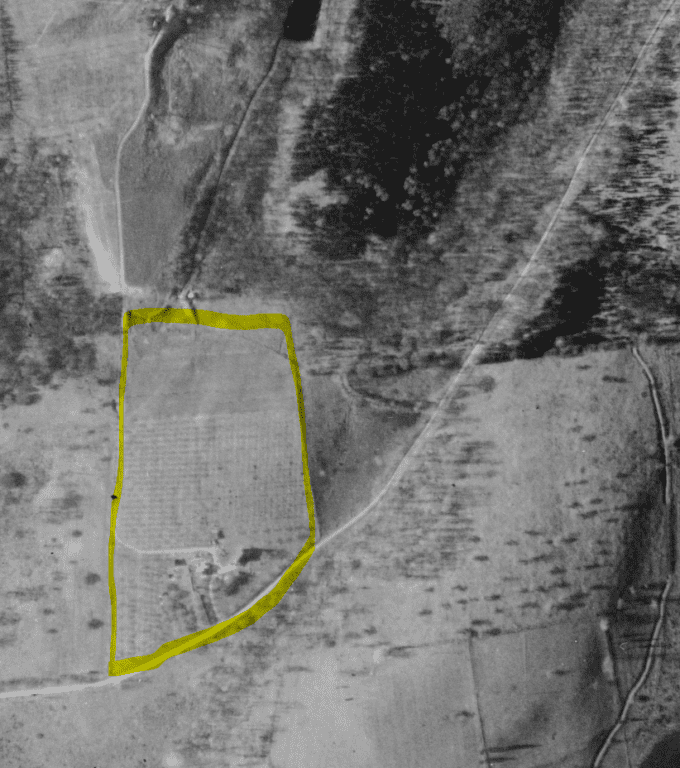From the West Hartford Archives: Arrowhead Fruit Farm, Farmington Line

Audio By Carbonatix

Arrowhead Fruit Farm. Photo courtesy of Noah Webster House & West Hartford Historical Society
Historian Jeff Murray takes a look into West Hartford’s past to uncover some surprising information, stir up some memories, or reflect on how much life has changed – or hasn’t changed at all. Enjoy this week’s ‘From West Hartford’s Archives’ …
By Jeff Murray
As fall has arrived, I thought it would be a good time to highlight one of the underrated farms in West Hartford – Arrowhead Fruit Farm on the north side of Tunxis Road at the line bordering Farmington.
In the spring of 1928, Charles E. Chaffee bought land on the north side on “Burnt Hill” from the City of Hartford and opened a fruit farm. A landscape gardener by trade, Chaffee’s first advertisement of the farm that I could find was from the fall of 1928 when they supplied peaches for $1.25 per basket at M. J. Burnham’s grocery store in West Hartford Center.
Once Sedgwick was built, it became the landmark for finding the farm (take Tunxis Road from Sedgwick and follow it for two miles). Often it was mistaken for Farmington (and the area sometimes is mistaken even today), but it was right on the line with Farmington. West Hartford’s borders follow an odd path past Wood Pond, with the north side of Tunxis Road belonging to West Hartford and the south side mostly in Farmington.
From the day the farm opened until it closed in the mid-1950s, the orchard was opened for apple picking. Peach Day was celebrated every year in September. Cider was sold (bring your own jug!) in the 1940s.
After Chaffee sold off the farm and much of the livestock at a public sale in 1939, multiple families lived on the farm afterwards, with children who enlisted during World War II and parents who mingled in both Farmington and West Hartford community clubs. After Arrowhead closed in the 1950s, the land over the border in Farmington was developed in the form of Burnt Hill Road and Hickory Lane.
The neighboring Burnt Hill Reservoir was born in the early 1960s from the flood control project. Severe floods after the 1955 hurricanes put a spotlight on flood control and several dams were built by the early 1960s to protect Hartford and West Hartford from overflow highlands water during flooding periods. Burnt Hill was built on a 50-acre tract and provided flood protection for 240 acres.

1934 aerial map of Arrowhead Farm and orchard at the line with Farmington
After World War II ended, the Tunxis Road area was slowly developed, with three houses between Selden Hill Drive and Creekside Lane built in 1947, 1948, and 1949. One of the first owners of a house in this area was a returning Navy veteran who took part in the Japanese occupation in 1945 and was later sales manager for a cooking utensil manufacturer. These custom brick ranches were popular in the late 1940s and reflected the mood of the day – ranch-style homes were simple and efficient to build for mass housing production for new homeowners, required less maintenance than wood homes, and emphasized more informal and open spaces, a shift away from the colonials and capes. In the woodlands of Tunxis Road, the architecture fit right in.
The opening of the Selden family’s land off Buena Vista in the late 1940s also led to rapid development through the 1950s, including Birch Hill Drive (originally called Nampil Drive), Royal Oak Drive, and Deer Run Drive. These houses were not only an extension west of the suburban growth of the town, but they were also ready to align with the proposed highway system. Unfortunately, construction of Route 291 to connect I-84 and I-91 over Burnt Hill Reservoir and through the West Hartford Reservoir did not come to fruition – it was delayed by numerous public hearings and political haggling, concerns of ecological degradation by environmental activists, adjustments by engineers, and ultimately abandoned. The outlet at Tunxis Road is still there today, hidden behind the tree line.
The Arrowhead Farm eventually just became a residence with some land nestled between Burnt Hill Road and Burnt Hill Reservoir.
In the spring of 2019, the land was acquired by Orchard Heights Developers, LLC, who proposed a six lot subdivision on a cul-de-sac. It was delayed for four years, but by the summer of 2023, work was well underway in laying out Old Farm Drive on the property. The featured photo comes from the collection of Charles E. Chaffee, the founder of the Arrowhead Fruit Farm.
Jeff Murray was born and raised in West Hartford and has been involved with the Noah Webster House & West Hartford Historical Society since 2011 when he was a high school student and won the Meyer Prize for his essay on local history. Jeff routinely volunteers as local history researcher uncovering information for numerous museum programs such as the West Hartford House Tour and West Hartford Hauntings. Jeff works as a data analyst at Pratt & Whitney.
Like what you see here? Click here to subscribe to We-Ha’s newsletter so you’ll always be in the know about what’s happening in West Hartford! Click the blue button below to become a supporter of We-Ha.com and our efforts to continue producing quality journalism.




Love your historical articles; have you ever considered conducting tours of these landmarks?
Jeff, I’d love to see an overview of the flood control projects scattered around West Hartford. The Reservoir itself is pretty well known, but there are some fairly substantial earthworks “hidden” away – Burnt Hill, Westmore, Bugbee and between Albany and Flagg, for example. 1934 aerials compared to today would be interesting. There are a lot of interesting ‘blank’ spots on the town map that have to do with water flow, it seems.
Love these articles.
P.S. Don’t know that I would call the defeat of 291 “unfortunate” though.